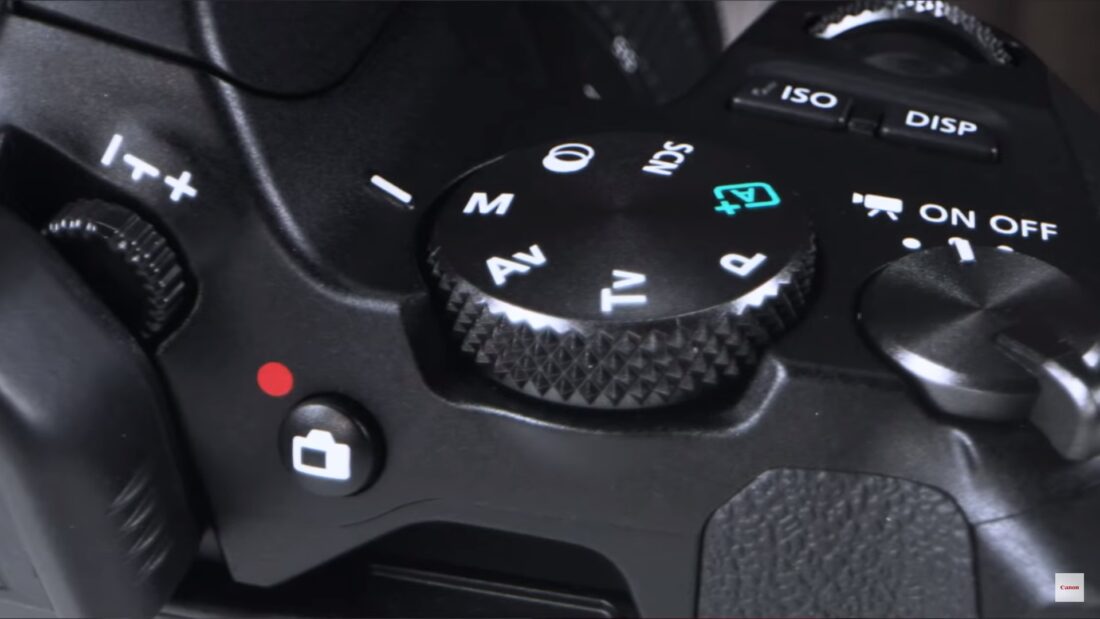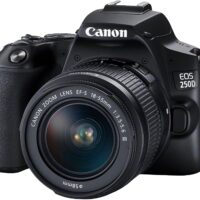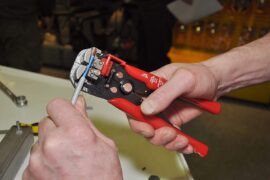A thousand-dollar budget for a camera can be a bit limiting. But we believe that it is possible to find a very capable camera within the said price.
According to SolidSmack Photography Editor Evangeline Summers, however, it is important to identify your needs and the type of camera you need. Apparently finding compact or action cameras under $1000 is not a problem, but DSLR and mirrorless models are different stories. In order to meet it, some get big slashes in other main features. Nonetheless, this is all true in all cameras regardless of their price. After all, no camera is perfect and it is just all about finding the right mixture of features that suits your needs.
In this matter and price point, Fujifilm X-T30 will give you the best offer with its 26.1MP X-Trans CMOS 4 APS-C sensor supported with an X-Processor Pro 4 processor. It also has a very efficient autofocus system with 425-point phase-detect AF points. Not only it can achieve good details and perform well in low-light conditions, but it can also do great things in terms of speed with its 30fps electronic burst.
Canon, Nikon, and Fujifilm have their own decent offers, as well. To see what they have to give, we reviewed their entries under $1000. We also tapped the most common categories that could interest all kinds of photographers such as the mirrorless, DSLR, and point-and-shoot sections. By emphasizing their special features and limitations, we hope to give you a camera that won’t exceed this price point and who knows, perhaps you’ll save more to buy the right lens for it!
Best Best Cameras Under $1000 Comparison & Rating
Best Cameras Under $1000 | Features |
3. Canon EOS RP | |
4. Nikon D5600 | |
1. Fujifilm X-T30





In terms of specs and the price, Fujifilm X-T30 sits comfortably with great balance. It is one of those cameras with compact systems but has managed to harness gigantic details within.
“It starts with the 26.1MP X-Trans CMOS 4 APS-C sensor backed with the X-Processor Pro 4 processor, with the former the same as what X-T3 has. Further, the sensor lacks the anti-alias filter which helps it to increase the sharpness of shots. You also get rich tones in your stills, excellent dynamic range, and impressive high-ISO performance,” said Summers.
Another big highlight is its 425-point phase-detect autofocus system that is now spread across the entire frame. It can even do well in low-light conditions that its sensitivity can work as low as -3EV. It can shoot 4K videos up to 30fps but you also have the option for 1080p at 60fps or 120fps.
As for the speed, X-T30 is one of the leading contenders. It comes with 30fps max burst using its electronic shutter with blackout-free viewfinder performance. However, if the 1.2X crop is a bit bothering for you, you can opt for its 8fps mechanical shutter burst which is still pretty decent. You also get a good 18 max buffer capacity which meets the standards and needs of most enthusiasts and beginners.
2. Canon EOS Rebel SL3 / EOS 250D





EOS Rebel SL3, or EOS 250D in other places, is another budget DSLR camera that is almost flawless despite its affordable price tag. There are almost no cutbacks done in its creation. As a matter of fact, it offers a complete package not just for beginners, but so as for intermediate and advanced users. Besides the option for a Guided UI and Creative Assist mode, experienced individuals aren’t left out with the advanced features it can offer.
“Though its viewfinder only comes at 9-point phase-detection points, its Live View comes with 3,975 selectable AF points that are well distributed across the frame,” said Summers. “SL3’s Dual Pixel CMOS AF system is very efficient in recognizing, locking, and following the focus to the subject on the screen with just a single tap of your finger.”
Even better, the fully articulating LCD display is touch-sensitive, which allows you to exploit the excellent Live View AF. As a matter of fact, according to Summers, using the screen to compose your shots makes you feel like you’re using a mirrorless unit. And while it comes with just a decent 5fps max burst shooting, it offers a 4K/30p capability which is something of a shocker at this price range. Further, its 24.1 MP APS-C CMOS sensor is backed with a DIGIC 8 processor which allows it to deliver exquisite detail and color rendition capabilities.
“Its dynamic range is just right; just the right amount of details in dark and bright spots. It is really not something of a deal-breaker since it is comparatively almost the same as the performance of SL2. However, it has a great improvement in the noise control and level even at the highest ISO settings,” said Summers.
3. Canon EOS RP





Finding a full-frame sensor under $1000 seems to be impossible these days but EOS RP makes it within your reach.
“It can be compared to the pricier EOS 6D Mark II that uses the same sensor since it offers the same frame and native 100-40,000 ISO range,” Summers comments. “Nonetheless, it offers a newer Digic 8 processor. It allows it to get a good dynamic range with more details even in the shadows.”
On the other hand, it is a cheaper version of EOS R. It’s even way smaller and that’s what we love about it. Still, EOS RP doesn’t come short in other sections and it is even one of the fewest full-frame mirrorless cameras with fully articulating LCD screens. The touch function of the 3-inch screen is very responsive and could be of great help for videographers.
Speaking of which, it can shoot in 4K. Yet, here is a caveat: it only uses a max frame rate of 25fps and gets that 1.76X crop factor.
“For less picky users who need a budget camera, this should,” said Summers. “Nonetheless, it also offers 1080p at 50fps which meets the proper standards and even allows you to use its Dual Pixel employing 4,779 AF positions. Even better, it now comes with Face Tracking with Eye AF under Servo AF. Thankfully, its autofocus is as reliable and fast as the one you can find in EOS R. Even in low-light conditions, it can do great things.”
And while EOS RP is not the best in terms of burst, it can shoot up to 50 14-bit RAW files before slowing down. It also still doesn’t have the IBIS we have been always looking for but with the right RF lenses, you get Canon’s Dual Sensing IS system.
4. Nikon D5600




Nikon D5600 isn’t an all-around camera due to the absence of 4K capability, but it has the right to pride itself on other features due to its price.
“It is very compact in form but it doesn’t come short with the size of its LCD display which comes at 3.2 inches. It also has a touchscreen function and it is a fully articulating type. It is a bit of a surprise since most of its rivals in this category slashed it just to give you that cheap camera body,” said Summers.
There is also a more generous AF system to aid you. It comes at 39 points with 9 of them being cross-type. Also, the autofocus in Live View also offers a good experience. Given the nature of D5600 as a DSLR at a very low price, the responsiveness of the Live View touch focus and shooting is something to celebrate.
It can shoot good stills at a very pleasing level of sharpness even at high ISO levels. The details are great and the camera can offer good exposure and white balance. Also, it comes with the Nikon’s wireless SnapBridge technology which makes it pretty advanced in terms of connectivity despite its price. Even better, besides easier file transfer; remotely photography is made possible.
5. Fujifilm XF10





If you want to elevate casual photography but want to stick with a compact camera, Fujifilm XF10 has a lot to offer.
This pocket camera’s small body and beautiful exterior house a 24.2 MP APS-C sensor. It delivers an effective focal length of 28 mm using the Fujinon 18.5mm f/2.8 lens. The best thing about XF10 is how Fujifilm tailored it to satisfy your casual photography needs. This explains the excellent filters for your shots.
“It offers the Rich & Fine NIR which uses a faint vignette but the subject can stand out with striking colors,” said Summers. “There’s also the Provia film simulation that creates rich colors in your stills.”
According to Summers, the overall detail rendition and noise levels are very pleasing. However, we won’t recommend it for videos since its 4K capability is a bit underwhelming at 15fps max frame rate.
On the other hand, it also doesn’t disappoint when it comes to autofocus features. Boasting a 91-point hybrid autofocus system, you get a decent AF. It really is not the best in performance but for casual users, it can be enough. Further, though it doesn’t offer a viewfinder, it compensates with a bright rear touchscreen that is very responsive.
Best Cameras Under $1000 - Buyer's Guide
Besides looking for the lowest price, it is also important to keep in mind not to overly compromise the set of features you need in a camera. After all, you are looking for a unit that gives you the ‘best value,’ and the only way to do that is to get the one that gives you all the things you need. For instance, if you are the best quality photos, the sensor of the camera matters a lot. The best sensors can be found in professional cameras such as mirrorless and DSLR.
No one wants a camera that will just make your experience terrible and difficult. This is why additional features such as a touchscreen LCD are truly helpful. Besides the easy controls, some cameras with a live view also allow easy setup of focus with just a touch of a finger. If you are getting a professional camera, it is also better to check the reliability of its autofocus system as it will guide you to get good shots with pure ease.
The camera should complement your skills and your plans. Getting mirrorless or DSLR cameras is a good investment since you can grow with them. They offer vast possibilities that you can use to improve your skills, not to mention that they can also cater to other lenses. However, if you don’t have any plans to maximize their use, you might want to consider compact cameras. They offer relatively good qualities and are commonly user-friendly.
As said, you should be getting your money’s worth in each purchase you have. Never get a camera that is so cheap but gives you huge unfavorable cutbacks in features. This is why we ended up with this list. For instance, the Rebel SL3 comparatively comes at a higher price than any other choice. When it comes to its features, however, you get the best value you are looking for.
Best Cameras Under $1000 - FAQs
A cheap lens can still do its job but getting a quality lens (which usually costs higher) will benefit you better. Most of all, the latter is more likely to last and will allow you to get sharper and more detailed shots.
A mirrorless camera has its own advantages that set it apart from a DSLR such as being more compact, lightweight, and better in video performance. Nonetheless, it also has some disadvantages where DSLR excels.
A large sensor could make better quality images. The difference with cameras with smaller sensors might be acceptable in bright lights, but it becomes significant in low-light captures.
Having more megapixels does not automatically mean better image quality because the image quality is affected by other factors such as sensor and pixel sizes.
A smartphone camera offers more portability and better storage. However, a point-and-shoot camera could have larger sensors (which could make better image quality). Further, a camera also allows you to experiment more on your photography by fiddling with settings such as the shutter speed or zoom.











